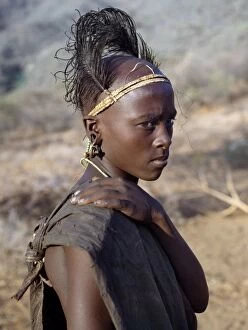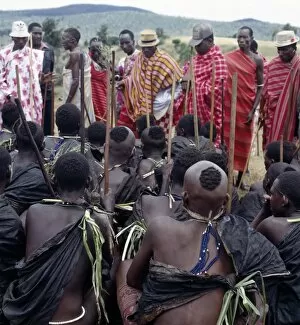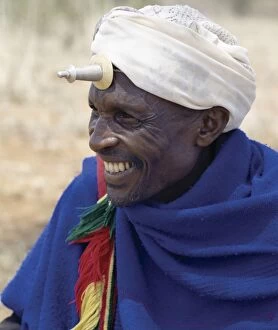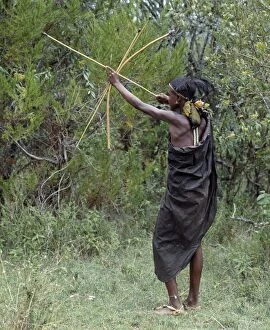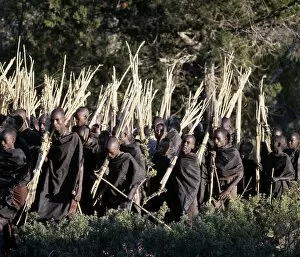Tribal Rite Collection
In the remote village of South Horr, Kenya, a timeless tribal rite unfolds
For sale as Licensed Images
Choose your image, Select your licence and Download the media
In the remote village of South Horr, Kenya, a timeless tribal rite unfolds. Dressed in his black goatskin cloak, a young Maasai boy prepares himself for the sacred journey that lies ahead. In the weeks leading up to their circumcision, these Maasai youths undergo rigorous training and rituals to mark their transition into manhood. With faces adorned with intricate patterns and vibrant colors, the Maasai youth proudly display their cultural heritage. The Samburu initiates sing joyously during the month following their circumcision ceremony, celebrating this significant milestone in their lives. As they embark on this transformative journey, a Samburu initiate dons bird skins hanging from his headband as a symbol of strength and resilience. With unwavering focus and determination, he takes aim at a bird using only a blunt arrow – an ancient tradition passed down through generations. Outside her humble dwelling, a Samburu mother lovingly shaves her son's head as part of the initiation process, and is believed that this act purifies him and signifies his readiness for adulthood. Mothers play an integral role in preparing their sons for this momentous occasion by rubbing animal fat into their cloaks – an act of protection and blessing. However, not all transitions are smooth sailing. As emotions run high during these rites of passage ceremonies, occasionally some young men may resist or rebel against societal expectations. In such instances they can forcibly restrained by elders who understand the importance of preserving traditions while guiding them towards maturity. Beyond circumcision rituals lie other celebrations within Kenyan tribes like Gabbra women singing and dancing to commemorate weddings - showcasing unity and love among families. Meanwhile Laikipiak Maasai girls gracefully dance under starlit skies as they embrace womanhood with elegance and grace. These tribal rites serve as powerful reminders of our shared human experience across cultures - marking pivotal moments in life's journey where tradition intertwines with personal growth.

